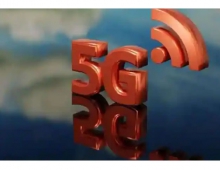
Wi-Fi 6 to Coexist With 5G, Wi-Fi Alliance Says
The Wi-Fi Alliance is promoting the advantages of the Wi-Fi 6 and clatifies that Wi-Fi and the upcoming 5G are complementary technologies, both contributing their strengths to enhance our wireless future.
In the Wi-Fi Alliance’s new white paper, Next generation Wi-Fi: The future of connectivity, the alliance explores Wi-Fi’s evolution to address next generation use cases. The paper outlines advanced use cases that are available today, outlines what is to come over the next few years and also describes Wi-Fi’s complementary role with 5G.
The paper is released after the 3GPP standards group said it’s working on a version of 5G specifically for unlicensed spectrum - the same spectrum that Wi-Fi uses.
"Wi-Fi and 5G will be complementary, but Wi-Fi is the only technology that delivers the unique blend of characteristics which have enabled Wi-Fi to be the success story that it remains today," the Wi-Fi Alliance said in a statement. "One of Wi-Fi’s greatest strengths is its ability to deliver affordable performance—combining high performance and equipment affordability which has played a major role in establishing the ubiquity and dominance of Wi-Fi. This affordable performance, coupled with other inherent strengths outlined in our new whitepaper, makes Wi-Fi best suited to address a broad range of connectivity scenarios."
“Wi-Fi continues to add a richer set of capabilities that broaden deployment scenarios,” said Edgar Figueroa, president and CEO of the Wi-Fi Alliance. “Excitement around new technologies will come and go, and meanwhile, Wi-Fi maintains its strong track record and commitment to core competencies that will continue to deliver mission critical connectivity and to carry the bulk of the world’s data traffic.”
Wi-Fi will soon deliver greater capacity, faster speeds, and lower latency to support next generation use cases such as augmented reality (AR), virtual reality (VR), Ultra high-definition (Ultra HD) video, multiparty gaming, Internet of Things (IoT), and other immersive experiences. Wi-Fi 6, or 802.11ax, will bring a new level of Wi-Fi capacity and performance, and enhancements to WiGig in the 60 GHz millimeter wave band will deliver faster speeds and longer ranges.
One way we’re being promised that 5G will change the connected future is by keeping more devices online in more places for more of the time—think the security camera in your living room or the self-driving car roving around your nearest city.
Wi-Fi's responce to that it is Wi-Fi HaLow, which will enable a variety of power-efficient use cases for connected car, digital healthcare, and industrial scenarios.
Have in mind that as Wi-Fi 6 arrives, upgrades to both devices and routers are going to be needed, but everything is going to be backwards compatible—your old phone will still connect to a Wi-Fi 6 router, and your Wi-FI 6 phone will still connect to your old router, you just won’t get the fastest speeds or the other perks.
The same applies for 5G, since new equipment is going to be needed to get the best performance, but old kit will still work as it always has.
5G is promising super-fast speeds—up to to 10 gigabits per second—but wifi is aiming to keep pace here too, though a technology known as WiGig. The upcoming WiGig upgrade, technically known as 60Ghz or 802.11ay, is going to match those speeds, and like Wi-Fi HaLow it might be a better option than 5G in some cases.
However, the range will be much shorter than standard Wi-Fi 6, so you’re going to need a wired connection into the room you want to use it in.
In October, the FCC agreed on a proposal to make up to 1200 megahertz of spectrum available for use by unlicensed devices in the 6 GHz band (5.925-7.125 GHz). The Notice of Proposed Rule Making has been published in the Federal Register, kicking off a public comment period.





















